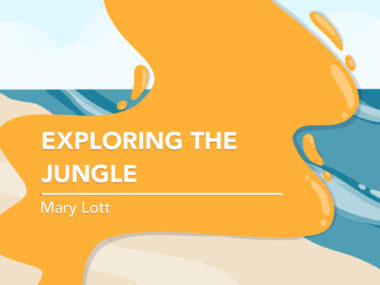What it’s like living with an autoimmune disease like CAD
I stumbled upon a friend's accurate depiction of my life
Written by |

“Let’s see what the fam is doing today,” I mused to myself as I opened my Facebook feed. On Facebook, I’ve been able to reconnect with acquaintances from elementary school. My own family is scattered across the world, and I often don’t know where my son is working. Social media enables me to keep in touch.
“Mmm, Bible translation work in Papua, Indonesia.” I keep scrolling. “I see they’ve received well-earned honors at a music festival.” I mentally cheer a friend who was a music major in college with me. But what really caught my eye was the first paragraph from another college friend, Linda.
“A quick lesson about autoimmune diseases,” she wrote. I was hooked.
The paragraph was about me
I was hooked because I have an autoimmune disease called cold agglutinin disease (CAD). When my blood is cooled, red blood cells clump together and are erroneously targeted for destruction by certain antibodies. The result is tiredness, breathing problems, joint pain, and a host of other symptoms. Most of the time, other people can’t see that there’s something wrong with me.
“I just wish more people understood what an autoimmune disease is,” my friend lamented.
Exactly four weeks ago, I had Mohs surgery. That wound hasn’t closed yet. Some of my friends, who expected a shorter healing time, have expressed concern.
Nothing is amiss, so I sigh and launch into a short explanation. We “CADdies,” as some of us with CAD call ourselves, just require longer healing times than others. I’ve found myself explaining this over and over and over again.
I’m typing this from the comfort of my bed, where I spend a lot of my time.
“It’s not a cold or the flu,” Linda’s paragraph explained. “You will never get better, and even a nap will not help.”
No, naps don’t help. My fatigue comes suddenly and silently.
Coping today
When I go shopping, I leave my car after parking in a handicapped space. Walking through the parking lot brings on overwhelming tiredness. As I enter the grocery store, I pick up my sweater and put it on not a minute too soon. The cold air of the produce section feels like I’m walking into a wall. I quickly make my selections and leave.
When I stagger to the car, I lock the door and just sit there, waiting for my breathing and pulse to slow down. People stare. I wasn’t limping in the store, and no one can figure out why I’m out of breath, nor why I parked in a handicapped spot. My CAD doesn’t fit into their perception of reality.
Another aspect no one considers with CAD: I’m losing my hair! My scalp shows through in places it shouldn’t. This aspect of CAD isn’t often considered. But my friend comments on it: “Achy joints and bones, dry skin, breaking hair, mood swings, and depression are just the tip of the iceberg.”
My self-esteem is taking a blow. In my opinion, I look older than old. I want to dance, hike, and go for long walks. I read about some CADdies who can do those things and I get depressed. It’s as if my spirit is living life at 30 while my physical abilities are of a much older person.
Today, I have what can be considered a “normal” agenda, without excessive adaptations. I’m going over to my dad’s house in a few minutes to assist in interviewing a home health caregiver, which won’t require much exertion.
Then, I’ll return home and rest until about 2:30 p.m. I’ll leave shortly after that to spend the evening directing Auburn University’s basketball fans to their seats in the arena. I can remain seated much of the time until I’m needed. After the game, I’ll return home exhausted.
Unless someone has an autoimmune disease, they can’t really understand a CADdy’s experience. I’ve learned that CAD affects each patient differently. Linda puts it better: “The ‘put together on the outside,’ rarely matches the raging battle on the inside.” I think this is a battle where there is no winner. The best I’m hoping for is an amicable ceasefire.
Note: Cold Agglutinin Disease News is strictly a news and information website about the disease. It does not provide medical advice, diagnosis, or treatment. This content is not intended to be a substitute for professional medical advice, diagnosis, or treatment. Always seek the advice of your physician or other qualified health provider with any questions you may have regarding a medical condition. Never disregard professional medical advice or delay in seeking it because of something you have read on this website. The opinions expressed in this column are not those of Cold Agglutinin Disease News or its parent company, Bionews, and are intended to spark discussion about issues pertaining to cold agglutinin disease.





Leave a comment
Fill in the required fields to post. Your email address will not be published.